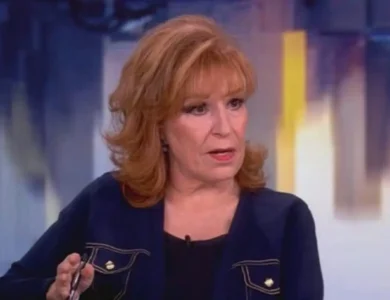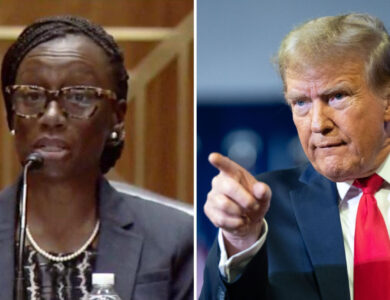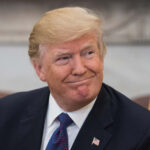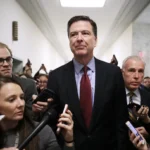Secret Service Agent Protecting Trump Tried Sneaking Wife Onto Trump Plane
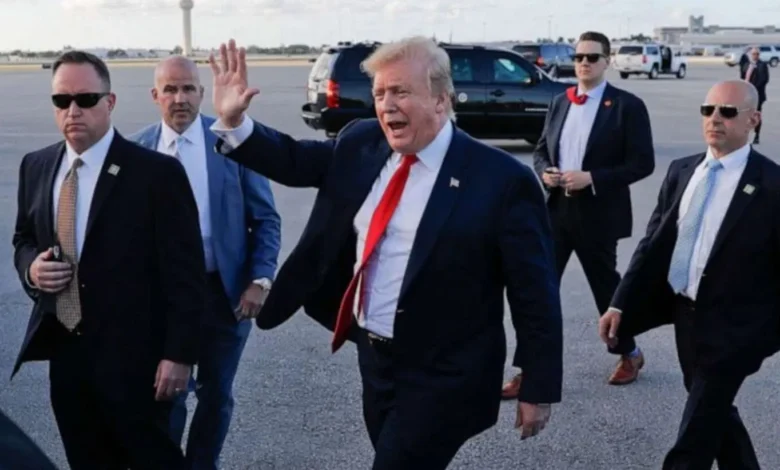
President Donald Trump confirmed on Tuesday that a Secret Service agent attempted to sneak his wife onto a transport plane that was traveling with the president’s Air Force One flight to Scotland last week.
“Wouldn’t you think it might be a little dangerous?” Trump asked reporters on his way back to Washington after five days on the other side of the Atlantic.
“That’s a weird deal,” the president added, confirming that he was informed of the matter before expressing confidence that agency Director Sean M. Curran will “take care of it.”
The Herald newspaper of Glasgow reported that the Dallas-based agent flew his wife to Maryland, where she received an official briefing and was bused to Joint Base Andrews ahead of Trump’s departure before being discovered and told to leave.
“The U.S. Secret Service is conducting a personnel investigation after an employee attempted to invite his spouse – a member of the United States Air Force – aboard a mission support flight,” Secret Service spokesperson Anthony Guglielmi told the outlet in a statement.
“Prior to the overseas departure, the employee was advised by supervisors that such action was prohibited, and the spouse was subsequently prevented from taking the flight. No Secret Service protectees were aboard and there was no impact to our overseas protective operation.”
On presidential visits, Air Force One is typically accompanied by a number of aircraft that transport Secret Service personnel, gear, and other support personnel.
The agency has come under fire from federal and congressional investigations for failing to stop two attempts on Trump’s life during the previous year’s presidential campaign.
Beyond that, it’s been a positive week for Trump.
The Trump administration’s recent trade deals with several countries are helping boost public confidence in the economy’s outlook.
Consumer confidence rose by two points this month to a reading of 97.2, according to the Conference Board on Tuesday, indicating that Americans’ views on the economy have stabilized after a sharp decline in the spring.
That drop followed the announcement of sweeping tariffs by President Trump, which had raised concerns about rising prices and potential strain on the labor market after being panned by most of the media and so-called experts who were wrong about the tariffs’ effects on the economy.
Since then, confidence has rebounded somewhat. The administration has repeatedly delayed the implementation of those tariffs and announced trade agreements with seven countries, including China, the United Kingdom, and Japan, said the report.
Earlier this week, the Trump administration announced it had reached the framework of a trade agreement with the European Union, one of the United States’ largest trading partners, calling it the “biggest deal ever made.” However, the survey was conducted in the weeks leading up to July 20 and does not reflect public reaction to the EU trade deal, CNN noted.
Prices for many key commodities, including food and gasoline, have either fallen or stabilized over the past couple of months.
“Inflation has come into better balance this year — but signs of renewed price pressure are starting to emerge,” Lauren Goodwin, economist and chief market strategist at New York Life Investments, said in a note to clients on Tuesday, per CNN.
“Goods prices in categories sensitive to trade policy — such as consumer electronics, apparel, and auto parts — have started to edge higher,” she added. “Steep tariffs often create visible economic pain – disrupting supply chains and suppressing demand.”
With the nation approaching the final days before Trump’s global trade deadline, tariff revenues have surged to a record $150 billion so far this year, Fox Business reported on Tuesday.
The U.S. collected nearly $28 billion in customs duties in July—the highest monthly total of the year—according to the Treasury Department’s “Customs and Certain Excise Taxes” data. The July figures, based on data through July 25, have already exceeded June’s previous record of $27 billion.
Back in January, tariff revenues stood at approximately $7.9 billion, but by April, they had more than doubled to $16.3 billion, Fox Business added.
Treasury Secretary Scott Bessent has stated that the administration projects tariff revenues could exceed $300 billion for the federal government.
While the Trump administration highlights the surge in tariff income, it’s U.S. businesses that are footing the bill—paying those higher import taxes directly to the federal government.
But one aspect of the EU trade deal is that member nations have agreed to purchase hundreds of billions of dollars worth of American energy and will invest in liquefied natural gas (LNG), oil, and nuclear fuels from the United States, shunning Russia.
